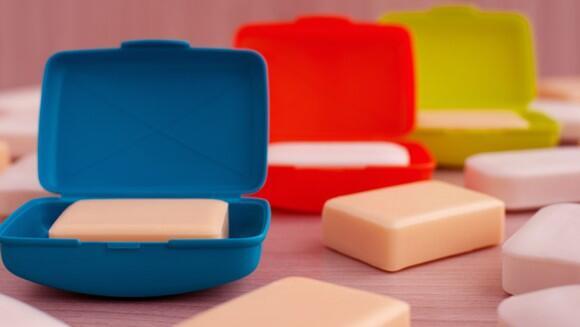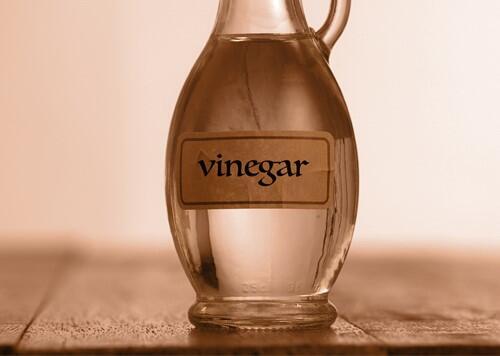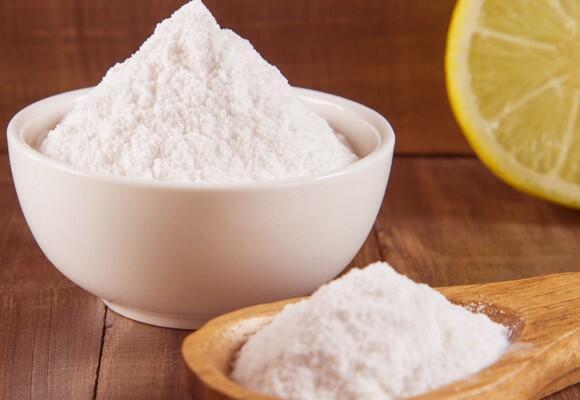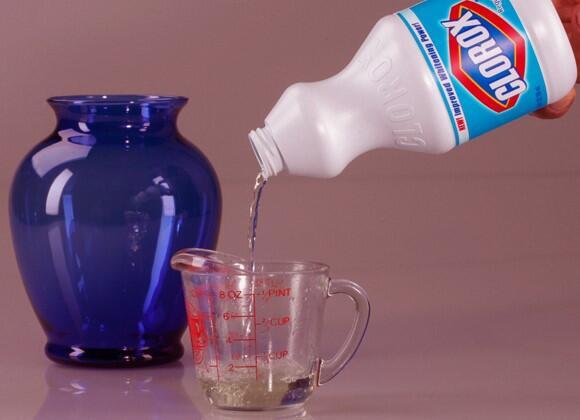The question 'How do you clean this?' often preoccupies many of us. However, defining dirt or contamination and cleanliness is far from simple. According to the Merriam-Webster dictionary, ‘contamination’ is defined as "The presence of a substance that soils, stains, corrupts, or infects by contact or association, reducing cleanliness", while ‘cleanliness’ is defined as "The quality or state of being clean and free from dirt or contaminants". Essentially, each of these concepts defines its counterpart.
What is contamination?
Contamination refers to the presence of an undesired component in a substance, on a physical object, in a natural environment. A contaminant may be a poisonous substance or have other effects on the environment (e.g., packing chips are not poisonous but it’s definitely not a good idea to eat them), or it could be a biological contaminant such as a bacteria, viruses, or fungi that may cause illness in humans and animals.
Thus, cleaning is the action that removes the contaminant. It can be performed in two ways: physical removal by exerting energy to separate the contaminant from the contaminated substance, such as scrubbing or rubbing, or chemical removal by dissolving the contaminant in a chemical substance and washing it off, or neutralizing biological contaminants with medications. To clean the contamination effectively it is essential to identify the contaminant and its properties in order to choose the most suitable means of cleaning.
Soap
Effective against: Fatty residues and bacteria
Its magic secret: Electrical polarity and a chemical structure that render one end hydrophilic (water-loving) and the other end hydrophobic (water-repelling)
And in detail: Substances that readily mix with water are known as hydrophilic (from Greek: water-loving) substances. In contrast, oils and fats are hydrophobic, or water-repelling substances. For instance, if you’ve ever attempted to mix vinegar and olive oil to prepare vinaigrette dressing, you likely observed that the two do not blend.
For this reason, using only water to wash away fatty residues from your hands, cooking utensils, or even taking a shower only with water and no soap, isn’t very effective. Water simply flows over the fat without removing it. This is where soap comes into play.
Soap is a compound comprising a water-soluble substance and a water-insoluble substance. The water-insoluble ends of soap molecules attach to fat residues, while the water-soluble ends bind with the water molecules used for washing. Soap essentially dissolves the fat in water by breaking fat globules into tiny droplets - forming soap-covered “balls” with the fat molecules on the inside and a soluble outer layer that can be easily rinsed away with water.
So, when it comes to cleaning fatty residues from any surface, soap is our best friend. For the same reason, it is effective in removing biological contaminants such as bacteria—since all living organisms have fatty cell membranes, soap dissolves and destroys them, allowing us to wash contaminants off surfaces and our skin. This helps maintain hygiene and minimizes disease transmission without the need to use special additives such as “antibacterial soap”.
4 View gallery


Soap molecules utilize a combination of soluble and insoluble substances to adhere to dirt, facilitating removal with water.
(Photo: Shutterstock)
Vinegar
Effective against: scale - and in general sterilization
Its magic secret: acidity
And in detail: This inexpensive liquid with its characteristic smell, serves not only for pickling vegetables, but also as a versatile cleaning product. It is used for cleaning floors, windows, and mirrors, removing water spots from showers, polishing taps and bathroom fixtures, and removing scale from electrical appliances, particularly kettles.
Vinegar is a solution of acetic acid (CH3COOH) in water. Other common acids in our cleaning cupboard include sour salt (citric acid); products for cleaning baths and toilets, and designated products for removing scale.
Household water is not distilled water but rather a solution containing many minerals, one of which is calcium carbonate (CaCO3), derived from dissolved limestone rock. When the water evaporates, for example, after heating in a kettle, the calcium carbonate crystalizes and turns into scale—a residue that is not water-soluble and tends to build up in pipes, kettles, electrical appliances such as dishwashers and washing machines, and on shower and bath surfaces.
When we add vinegar to water, the acetic acid attacks the scale and allows us to dissolve it in water. Thus, we can remove residues that could damage appliances and provide a breeding ground for contaminants such as mold. Acetic acid also kills bacteria, and since it is not poisonous at household dosages, its use is safe and recommended for cleaning the buildup of scale. The disadvantage of vinegar is its strong odor, but it evaporates quite quickly with ventilation. Some people even use it as a fabric softener and even as a shampoo.
4 View gallery


Inexpensive, versatile in the kitchen, and effective as a cleaning agent and scale remover due to its acidity. Vinegar
(Photo: Shutterstock)
Baking soda
Effective against: Fats, stubborn food residues, and bad smells.
Its magic secret: Alkalinity
And in detail: Baking soda is a salt also known as sodium bicarbonate (NaHCO3) that appears as a fine powder. When dissolved in water, it behaves as a base, or alkali, which is the chemical opposite of an acid.
The removal process occurs in two stages. First, we dissolve the baking soda in water, and the salt splits into two components—sodium and bicarbonate. Next, the bicarbonate reacts with the water, producing, among other things, a substance called hydroxide. When a little water is added and the resulting paste is applied to the dirty surface, it reacts within a few hours with the remaining acidic components in the dirt, allowing us to remove them.
In the resulting alkaline environment a process called saponification occurs, in which the fatty acids are converted into soap that washes away easily with water. This reaction essentially allows natural soap formation within the dirt layer where external soap application is challenging, making baking soda such an effective cleaning agent.
Baking soda is also an effective deodorant that helps eliminate bad smells. Bad odors typically arise from volatile molecules released during chemical processes involving bacteria found in food or on the skin, such as in sweat for example. Many of these aromatic compounds are acids or bases, and baking soda's ability to react with both allows it to effectively neutralize a wide range of substances.
It's important to remember that when baking soda is mixed with vinegar or another acid, a neutralization process occurs, releasing carbon dioxide gas. This reaction creates vigorous effervescence as soon as the two substances mix, and it is often used in children's activities to make volcanoes for science projects. However, mixing them results in mutual neutralization, forming a solution that is primarily water and a small amount of salt, which isn't very effective as a cleaning product. Therefore, when selecting a cleaning product, it's best to choose either baking soda or vinegar, depending on the type of dirt you need to clean. Using both together may create a pleasing foam but won't effectively clean
During the Manhattan Project of the 1940s (development of the atom bomb), scientists encountered an issue where uranium stuck to their clothes. The effective solution they discovered was to launder their garments in water with dissolved baking soda (22 grams per liter), highlighting another practical use of this versatile substance.
4 View gallery


Effective at eliminating bad smells and stubborn dirt. Baking soda
(Photo: Shutterstock)
Bleach
Effective against: Bacteria, mold, and fungi, and as a whitening agent
Its magic secret: Oxidation and reduction
And in detail: Bleach is one of the most common substances in our cleaning cupboard. It serves widely as a bleaching agent, meaning it removes color from substances, and a potent sterilizing agent that efficiently eliminates bacteria, mold, and fungi.
Chemically, bleach is a solution of sodium hypochlorite (NaOCl) in water. When dissolved in water, it forms a weak acid known as hypochlorous acid. This acid is the active ingredient in bleach, and it is very unstable.
Hypochlorous acid tends to react with many substances in the environment. It reacts with various proteins, affecting their function, oxidizes and breaks down the nucleic acids necessary for DNA and RNA synthesis, and in alkaline conditions, it also causes the breakdown of the fats that comprise cell membranes. Consequently, bleach serves a very potent sterilizing agent, capable of rapidly killing bacteria even at relatively low concentrations. These attributes have led to its widespread use in households, medical settings, and industry. Its reactive properties also lend it as an effective bleaching agent - reacting with dyes and rendering them incapable of absorbing light across different wavelengths.
However, safety precautions are necessary when using bleach, since mixing it with other common household substances can be dangerous. Combining bleach with acids (e.g., vinegar, scale removers or toilet cleaner) releases chlorine—a toxic gas that irritates the skin, eyes and respiratory system and may even be lethal. Upon contact with our skin, it reacts with the fats and proteins on its surface, causing the skin to become slippery due to cell damage. Mixing bleach with ammonia-containing products can produce additional poisonous gasses, while mixing it with peroxide can produce a strong reaction that releases flammable oxygen.
Many household accidents occur due to incorrect use of bleach; therefore, it is very important to never mix it with any other cleaning product, use it at low doses and dilute it with water. If used wisely, you can enjoy its sterilizing properties while staying safe.
Some cleaning products sometimes include limonene, a substance derived from the peels of citrus fruits, known for its characteristic aroma. Originally used for fragrance, limonene also possesses cleaning properties: it effectively dissolves fatty residues, making it suitable for degreasing machinery and removing adhesives and dyes. With relatively low toxicity, biodegradability, and easy production from citrus peels, limonene is valued for its pleasant scent and cleaning efficacy.
4 View gallery


This acid is very potent and hazardous, yet highly effective when used carefully and with caution. Bleach
(Photo: Shutterstock)
Aluminum Foil
Effective against: Metal tarnish
Its magic secret: Removing a damaged layer or reversing a chemical reaction.
And in detail: One of the most frustrating types of dirt occurs when jewelry and silverware lose their shine and a dull black layer, known as tarnish, forms on their surface. This tarnish results from a chemical reaction where hydrogen sulfide in the air, which comes from industrial processes and decaying matter, oxidizes the silver, forming a thin, blackish layer of silver sulfide (Ag2S).
This black silver sulfide layer is insoluble in water but can be removed either by polishing, that is, by rubbing the object and removing the layer, often along with some of the silver, or through a chemical process that reverses the oxidizing process and restores the silver to its original state.
Polishing products typically use the first method - mechanical abrasion - the product makes the rubbing easier, allowing the removal of the black tarnish layer without scratching the item. However, there is a simple, common household method that allows reversal of the oxidation and involves using salt or baking soda along with aluminum foil. Using this method, aluminum foil is placed in a container, boiling water mixed with baking soda or salt dissolved in it is poured in, and the tarnished silver item is placed, ensuring that it is in contact with the aluminum foil. You can see in the video that this setup initiates a chemical reaction, visibly restoring the shine and resulting in a nice shiny item. Once dried, it is once again ready for use.
When the aluminum foil comes in contact with the silver, electrons move from the aluminum to the silver and it returns to its original state. The sulfide reacts with the water to produce hydrogen sulfide gas (which has a distinctive rotten egg odor). The process occurs in a wet environment and is more efficient at high temperatures. Direct contact between the aluminum and the silver object is crucial, since electric currents are generated between the two during the reaction. Similar electrochemical reactions are also used in the production of electric batteries.
What is the role of the salt or baking soda? In clean water, no reaction occurs because a thin layer of a substance called aluminum hydroxide (Al(OH)3) forms on the silver object, preventing further reaction. The salt or baking soda dissolves the aluminum hydroxide and exposes the aluminum metal, making it available for oxidation. The dissolved salt or baking soda also increases the number of electric charges in the solution and thus accelerates the rate of the electrochemical reaction.
We can also take steps to slow down the tarnishing of silver objects. Tarnishing accelerates in acidic conditions, so it's important to be mindful of which substances and fabrics come into contact with silver items. They should be stored in cupboards or airtight containers, but keep in mind that cupboards made of wood or certain types of fabric and plastic may release substances that promote tarnishing. There are products designed to counteract hydrogen sulfide in the air, preventing it from affecting silver stored in cabinets. Finally, avoid touching polished silver with bare hands, as natural oils found on your hands can create an acidic environment that promotes tarnishing.

